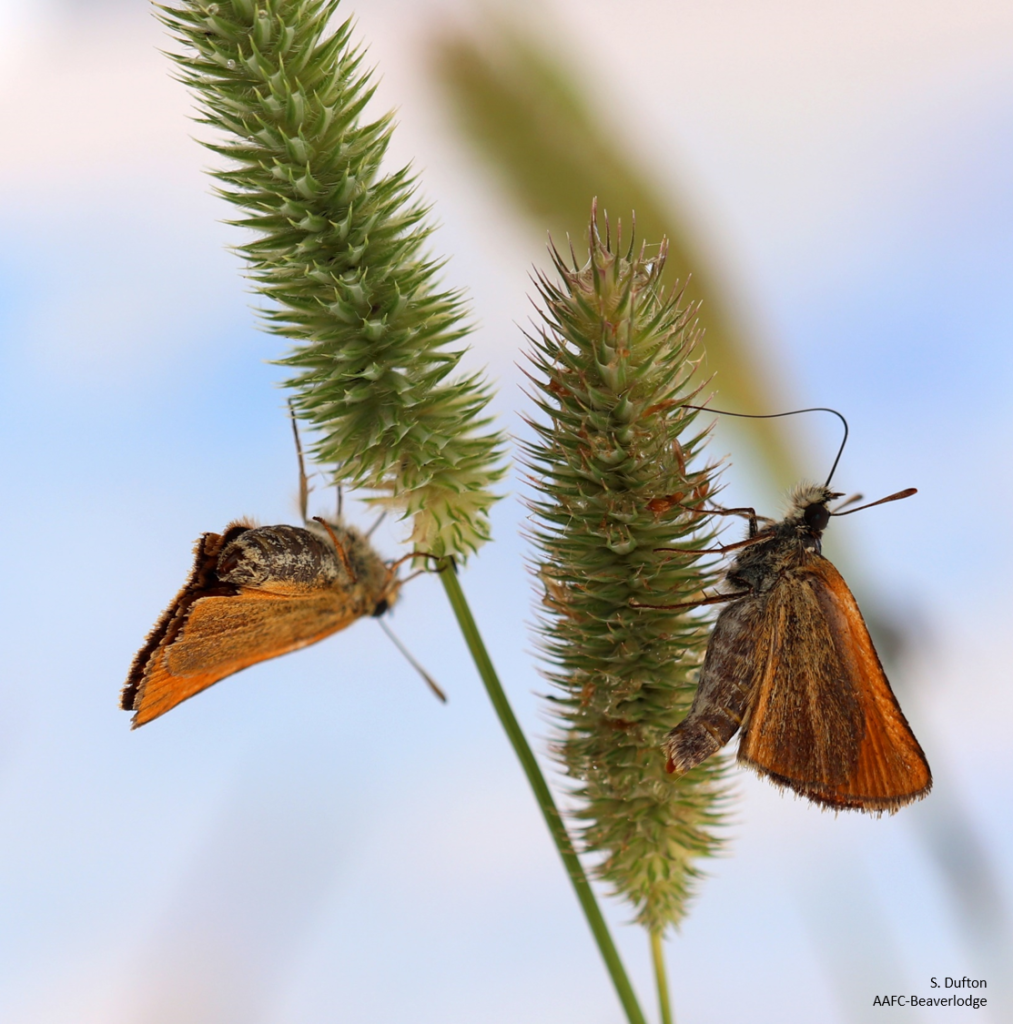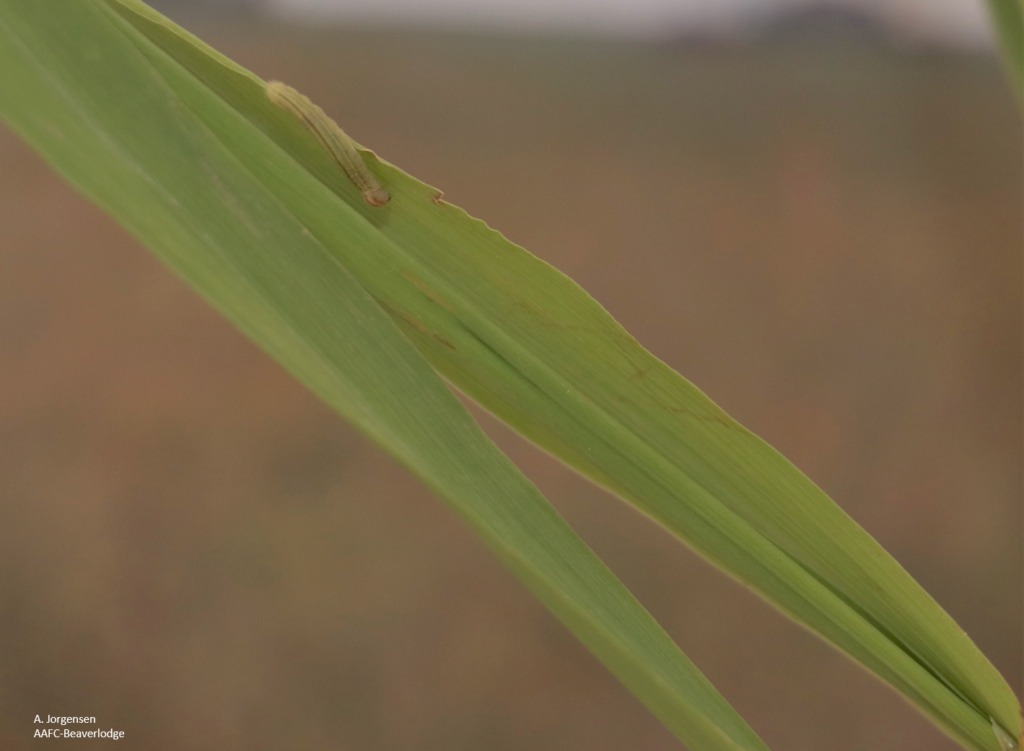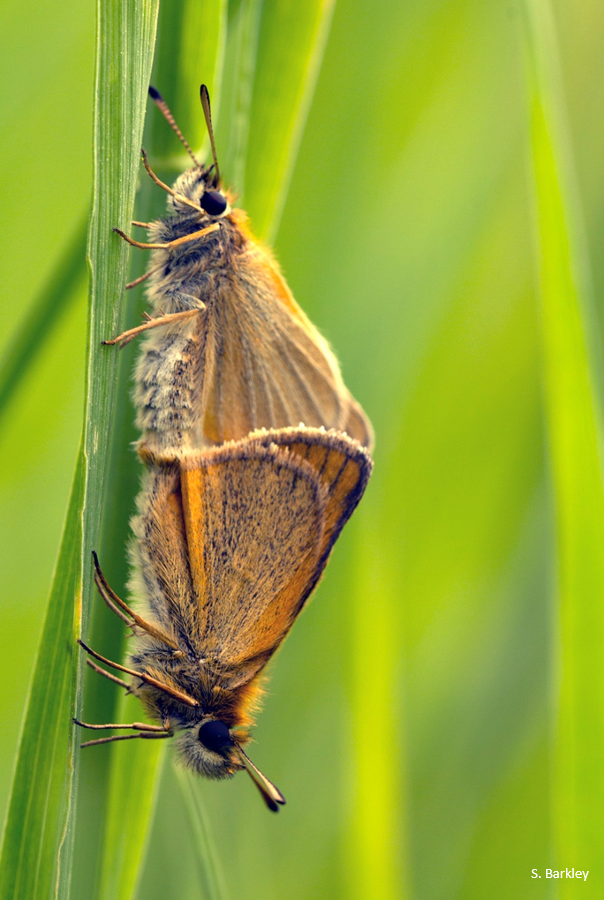The European skipper (Hesperiidae: Thymelicus lineola) is a diurnal, bright orange butterfly (Fig. 1). The predominantly green defoliating larvae can cause economic levels of damage in timothy. The larvae also feed on other species of grasses and winter wheat.
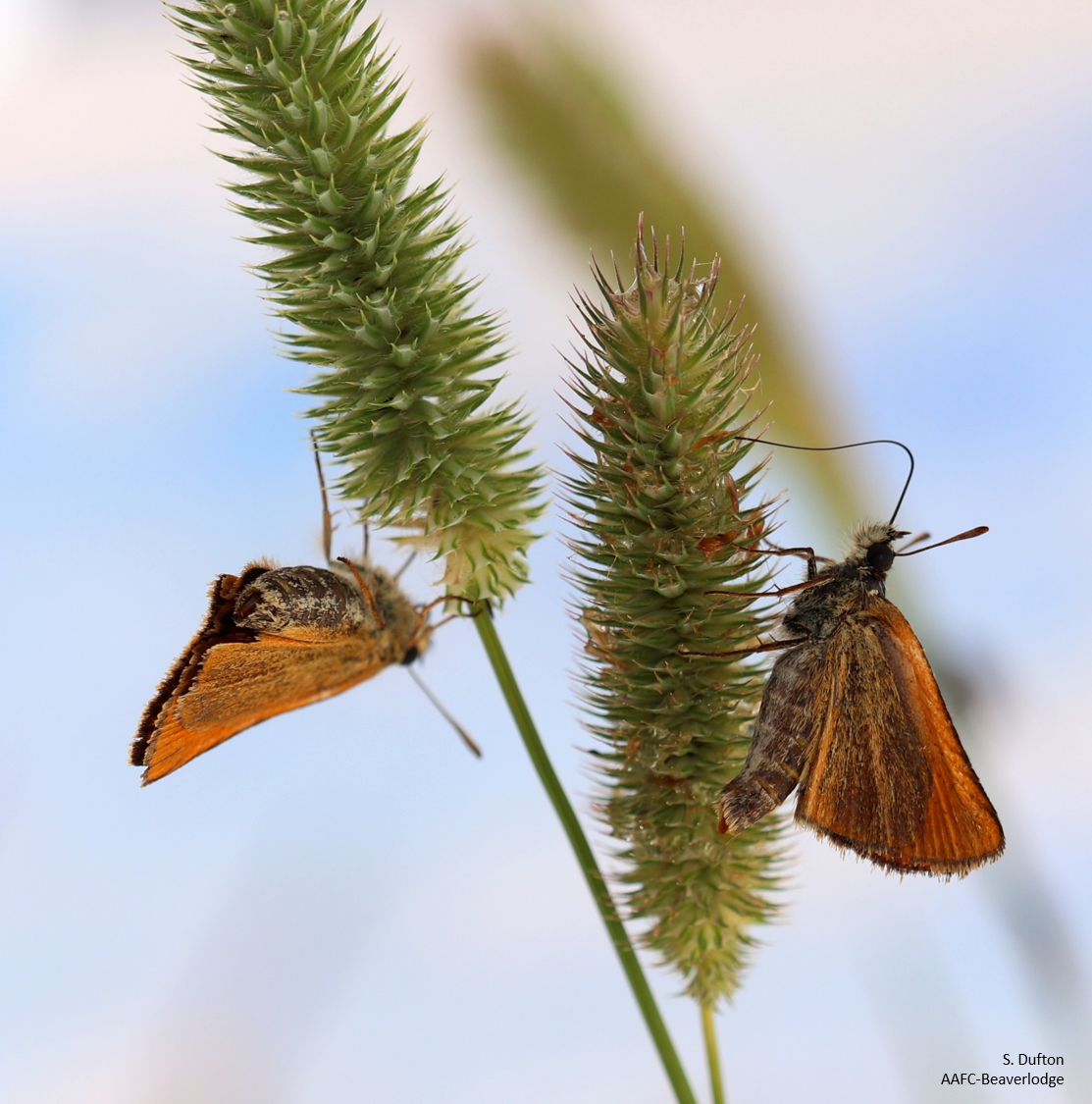
There is one generation per year of European skipper but butterfly oviposition or egg laying largely dictates where damage occurs the following summer. Host plants include timothy (Phleum pretense), cocksfoot (Dactylis glomerata), couch or quack grass (Agrophyron repens), perennial ryegrass (Lolium perenne), meadow fescue (Festuca pratensis), orchardgrass (Dactylis glomerata).
Early in July, butterflies feed on nectar, mate, and lay eggs. Females lay vertical rows or “strings” of groups of ~30 eggs on the inside of grass leaf sheaths, seed heads or on the stem of a host plant. By late July, larvae develop within the eggs yet they remain safely enclosed to overwinter inside the egg shell. Eggs can be transferred in both hay and seed as seed cleaning will not remove all eggs. Early the following May, the overwintered larvae emerge from the shell, crawling up growing grass blades to feed. Five larval instar stages cause damage by defoliation of the upper leaves of timothy.
Larvae are leaf-tyers that spin and attach silk ties across the outer edges of leaves to pull them together (Figs. 2-5). The silk ties hold the leaf in a tight furl enclosing the larva within a leafy tube then it moves up and down the tube to feed. The tying behaviour and camouflaged green body (marked longitudinally with two white lines) make larvae hard to locate when scouting. Even larger larvae with their brown head capsules are surprisingly difficult to locate because the larva will lie lengthwise, along the base of the leaf fold yet the larva remains very still until touched. When high densities of European skipper larvae are present, leaf tying goes out the window and larvae feed in more exposed areas, often amidst rapidly disappearing foliage.
Adult wingspans range from 19-26 mm but they have bright brassy orange wings with narrow black borders and hindwing undersides that are pale orange and greyish. Nectar sources for adults include orange hawkweed, thistles, oxeye daisy, fleabane, white clover, red clover, common milkweed.The typical flight season extends from early June to mid-July but will vary regionally with southern parts of the Canadian prairies starting earlier than more northern regions.
Access the Provincial Insect Pest Report for Wk09 for updates for this economic insect pest.
Cultural control strategies for European skipper include separating timothy from nectar sources to avoid attracting adults which will mate then oviposit in the same field. Another strategy is the removal of cut grass or bales.
In terms of chemical control, an action threshold of six or more larvae per 30 cm x 30 cm area is recommended to mitigate losses but emphasis should be placed on scouting and managing early instar larvae. If the need arises, chemical control in timothy involves using a higher water volume (e.g., 300 L H2O/ha) to adequately cover the thicker canopy.
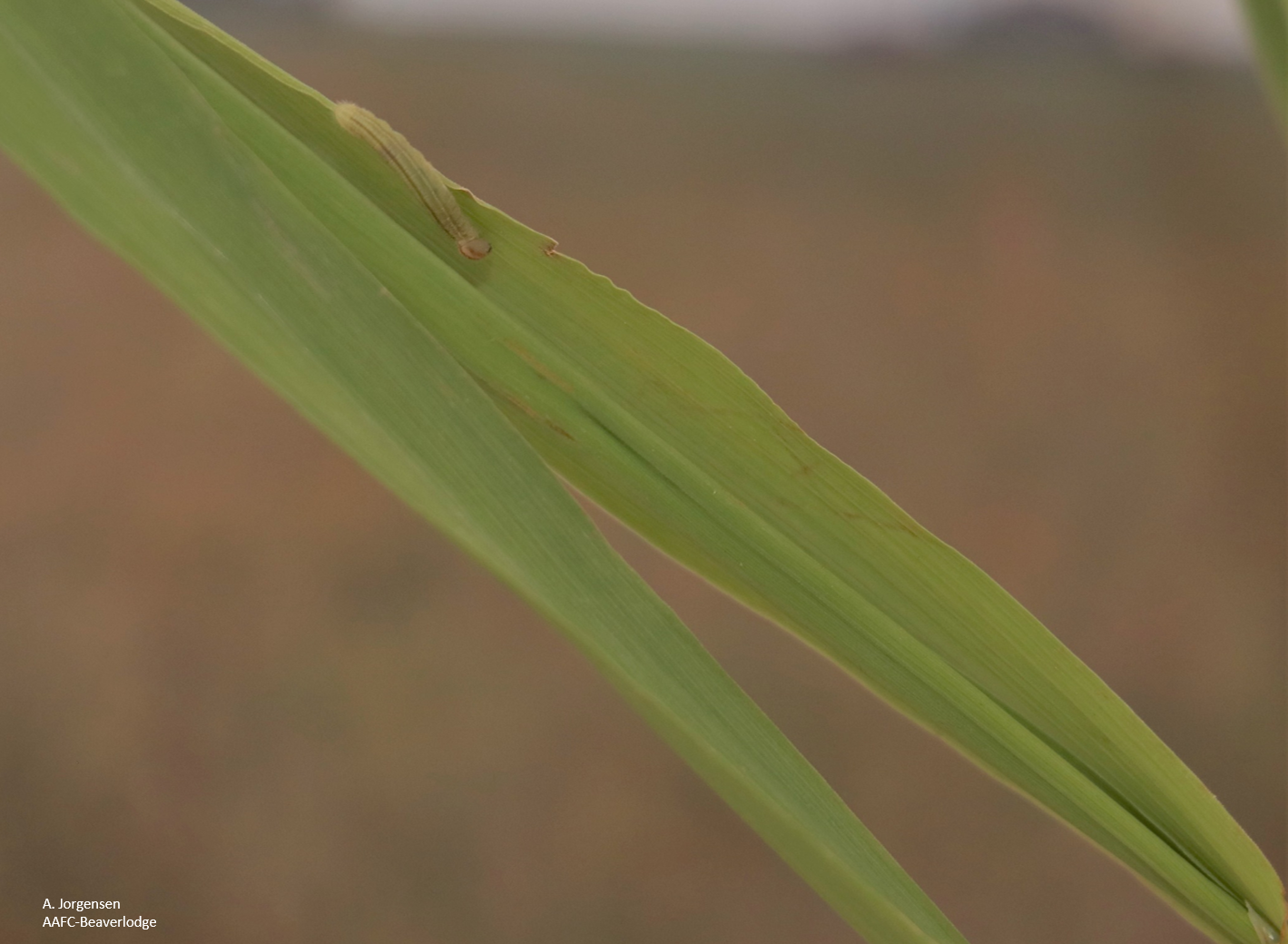
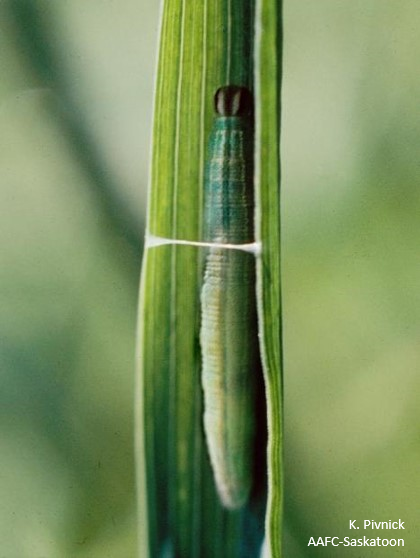
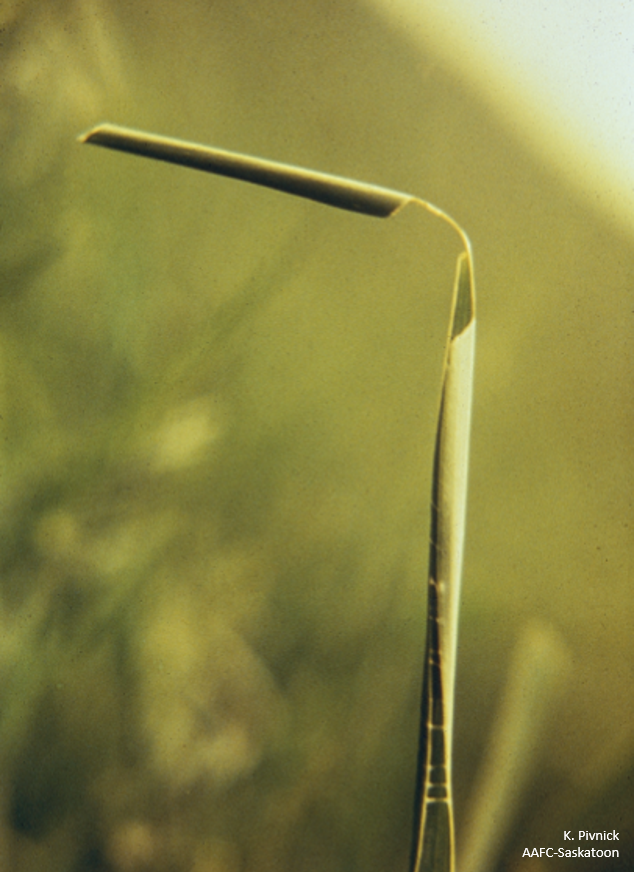
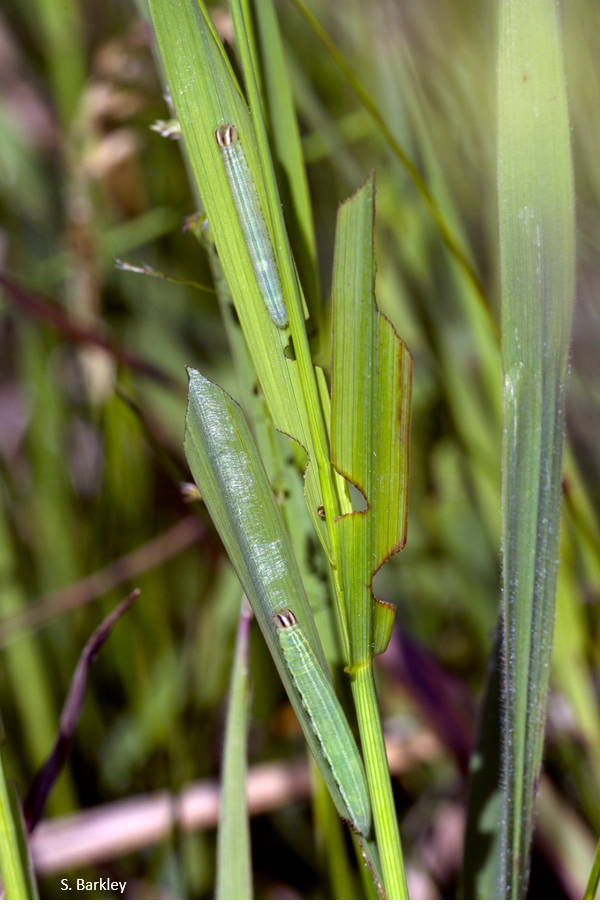
The European skipper was introduced to North America at least a century ago and has moved west and north in its distribution across western Canada even though its area of origin is recognized as Eurasia and northwestern Africa. The initial report of European skipper in Canada is from 1910 and cites it being imported on contaminated timothy seed near London, Ontario.
Distribution records for T. lineola can be reviewed on the Butterflies of North America website. In western Canada, T. lineola established in parts of Saskatchewan by 2006. In 2008, butterflies were collected near Valleyview, Alberta (Otani, pers.comm.), and in 2015 larvae were observed feeding in the flag leaves of winter wheat near Mayerthorpe, Alberta (2015 Meers, pers. comm.). Specimens confirmed as T. lineola were collected in 2016 near Valleyview, Donnelly, and High Prairie, Alberta (2017 Otani and Schmidt, pers. comm.) with additional specimens confirmed from Baldonnel and Clayhurst, British Columbia in 2021 (2021 Otani and Schmidt, pers. comm.).
The European skipper was the Insect of the Week in 2022 (Wk10).

